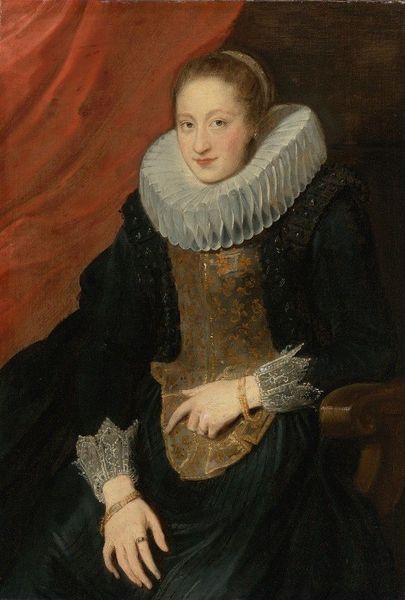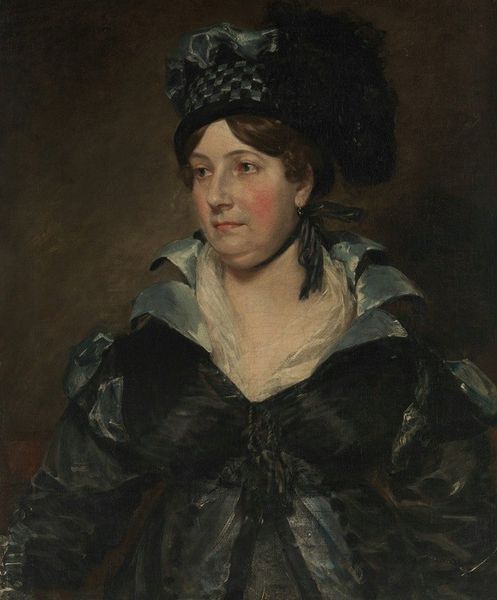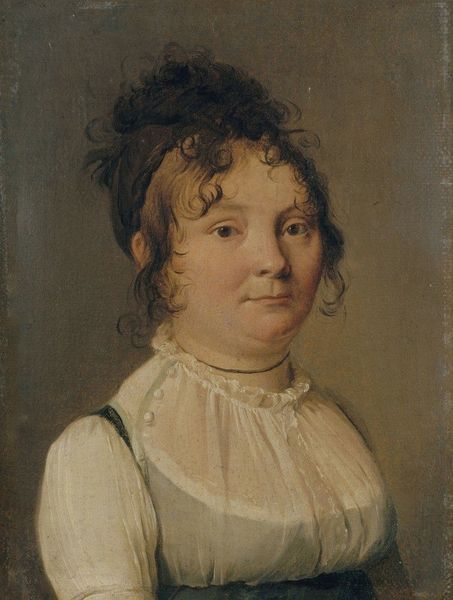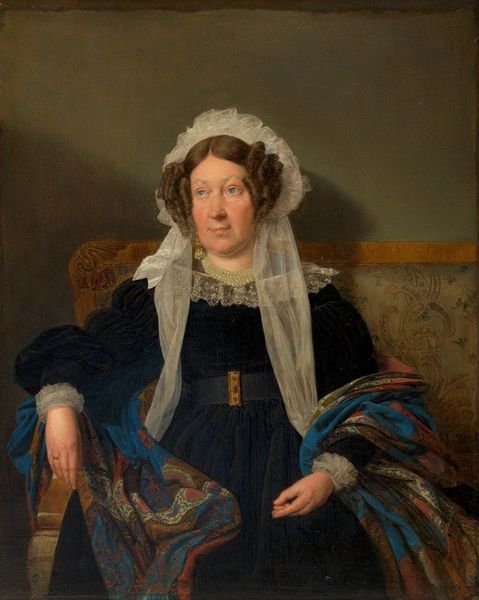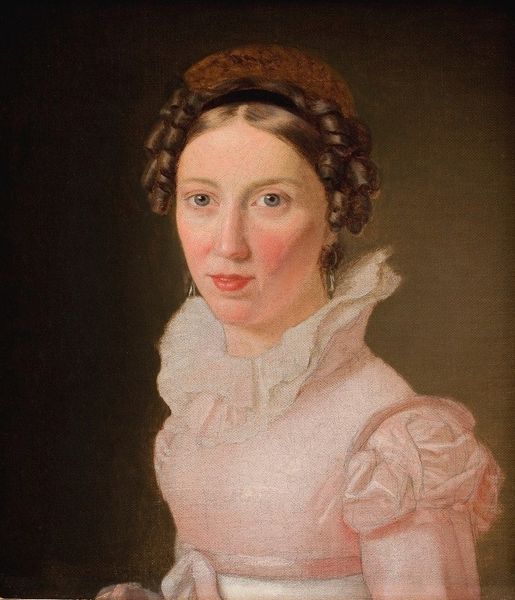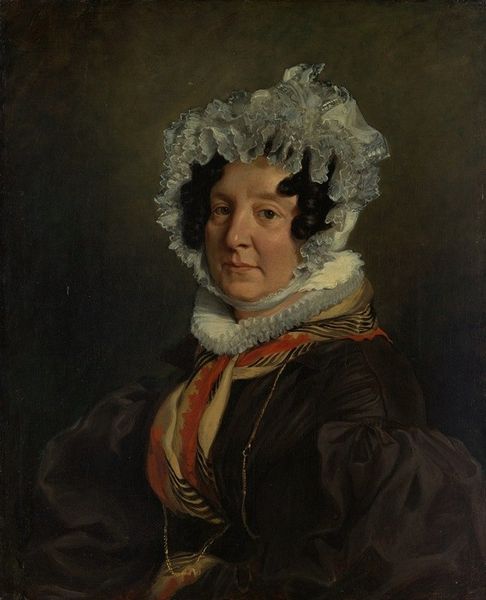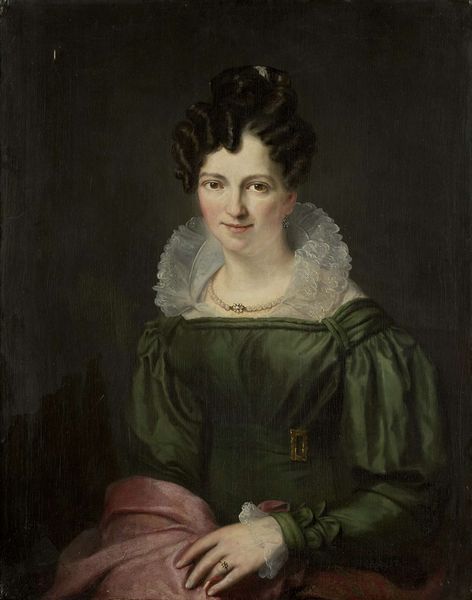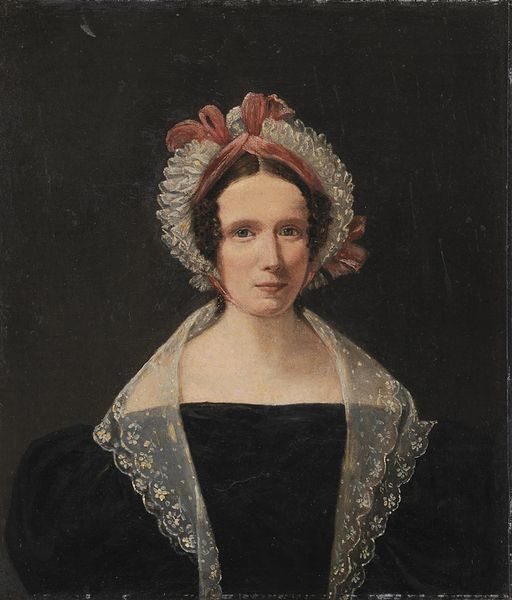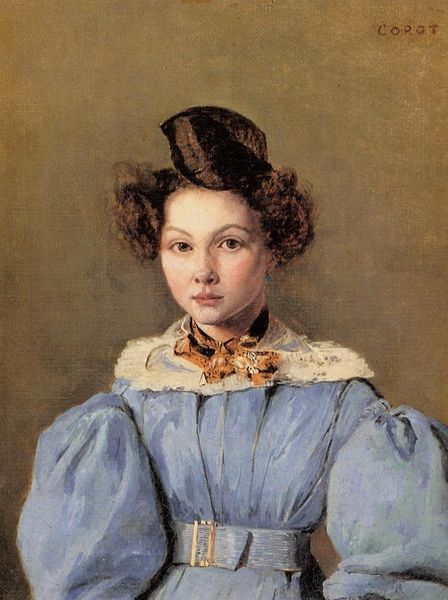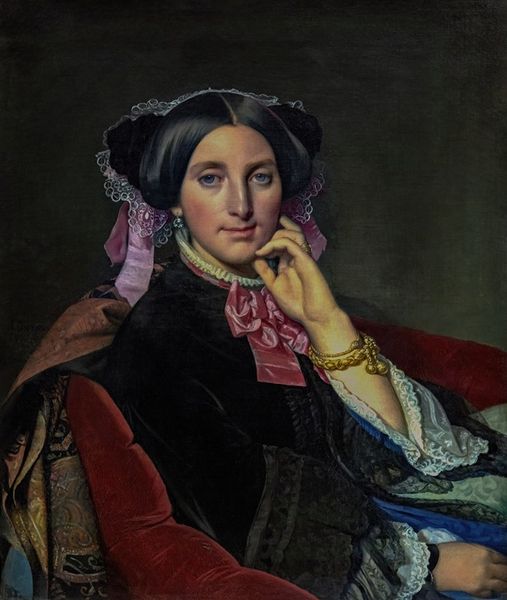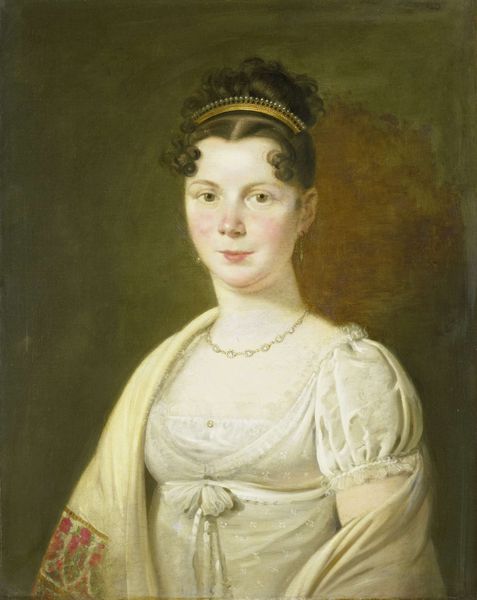
Madame Corot, the Artist's Mother, Born Marie Francoise Oberson 1835
0:00
0:00
oil-paint
#
portrait
#
oil-paint
#
oil painting
#
intimism
#
romanticism
#
genre-painting
#
history-painting
Copyright: Public domain
Curator: Here we have Camille Corot’s “Madame Corot, the Artist's Mother, Born Marie Francoise Oberson," painted around 1835. It’s an oil on canvas and resides here at the Scottish National Gallery. Editor: My first impression is a study in textures – the lace bonnet, the soft wool of her dress, and those wonderfully rendered gloves. You can almost feel the weight and drape of each fabric. Curator: Indeed. It’s a fascinating glimpse into Corot’s intimate world. Beyond a mother-son portrait, this piece can be understood in relation to the domestic sphere of 19th century bourgeois Parisian life. We’re not just seeing Madame Corot; we’re witnessing a statement about motherhood and class identity through the details of her garments. Editor: Precisely! And those details tell a story of production, don’t they? Consider the lace—likely not made by her own hands, but by laborers, perhaps women in precarious situations. Her clothes quietly speak of industry and consumption within the rising middle class. Curator: Exactly! We could delve into theories of performance and portraiture, where the subjects adopt certain personas, particularly the role of matriarch here, a figure whose influence in the domestic sphere was undeniable. It also pushes back against stereotypical assumptions around depictions of women in art during the Romantic period by rendering her gaze in a less aestheticized, and altogether more grounded way. Editor: And that somber palette, the brown background and the muted tones— they feel particularly revealing when you examine it from a production standpoint. The availability and cost of pigments influenced not only artistic choices but the overall visual experience. Did Corot choose those colours because they mirrored a somber mood or because they were affordable and accessible materials? It's a tangible connection to Corot's specific time and means of working. Curator: Absolutely. Looking closer, we see Corot subtly elevates his mother by showcasing her quiet resolve, contrasting many of the more flamboyant displays of wealth common at the time. She doesn't need excessive embellishments to denote her status or role. Editor: And that’s wonderfully brought out by his careful layering of oil paint; you sense a real appreciation for materiality rather than just depicting it from afar. Her dignity comes from the visible textures of her working life rendered in the materials available to him. Curator: Examining the social construction of motherhood alongside the painting’s technical aspects allows us a rich multi-layered view of both the artwork and Corot's milieu. Editor: Indeed! Appreciating the art means seeing those threads that make it a part of not just a historical period, but of the daily reality of producing and consuming at that point in history.
Comments
No comments
Be the first to comment and join the conversation on the ultimate creative platform.

